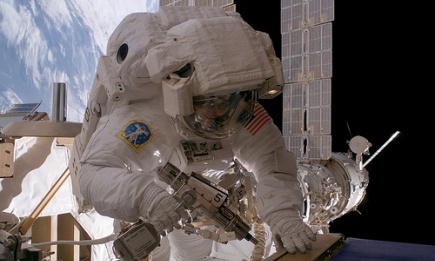Vlieg mee met ruimtestation

André Kuipers mocht af en toe uit een raampje kijken en beelden schieten, maar verder toch vooral aan het werk met zijn experimenten. De nieuwe HD-camera’s aan het ISS bieden de luxe van voortdurende beelden van de aarde vanuit de ruimte. Scholieren en studenten zijn bij de opzet van dit High Definition Earth Viewing (HDEV) experiment aan het werk gezet door NASA.
Men kan ermee uitzoeken wat de impact van de omgeving in de ruimte is op dit soort instrumenten, zodat bij toekomstige misses nog betere camera’s en dergelijke kunnen worden ingezet.
Klik hier en raak verslaafd. En is het beeld zwart, tsja dan vliegt het ISS aan de nachtzijde van de aarde….
Thuisbasis ESA-module
De NASA vertelt over HDEV onder meer:
“The High Definition Earth Viewing aboard the ISS was activated April 30, 2014. It is mounted on the External Payload Facility of the European Space Agency’s Columbus module. This experiment includes several commercial HD video cameras aimed at the earth which are enclosed in a pressurized and temperature controlled housing. Video from these cameras is transmitted back to earth and also streamed live on this channel.
While the experiment is operational, views will typically sequence though the different cameras. Between camera switches, a gray and then black color slate will briefly appear. Since the ISS is in darkness during part of each orbit, the images will be dark at those times. During periods of loss of signal with the ground or when HDEV is not operating, a gray color slate or previously recorded video may be seen.
Analysis of this experiment will be conducted to assess the effects of the space environment on the equipment and video quality which may help decisions about cameras for future missions. High school students helped with the design of some of the HDEV components through the High Schools United with NASA to Create Hardware (HUNCH) program. Student teams will also help operate the experiment.”
Meest Gelezen
Vrouwen houden universiteit draaiende, maar krijgen daarvoor geen waardering
Hbo-docent wil wel rolmodel zijn, maar niet eigen moreel kompas opdringen
‘Sluijsmans et al. slaan de plank volledig mis’
Wederom intimidatie van journalisten door universiteit, nu in Delft
‘Free riding brengt het hoger onderwijs in de problemen’

